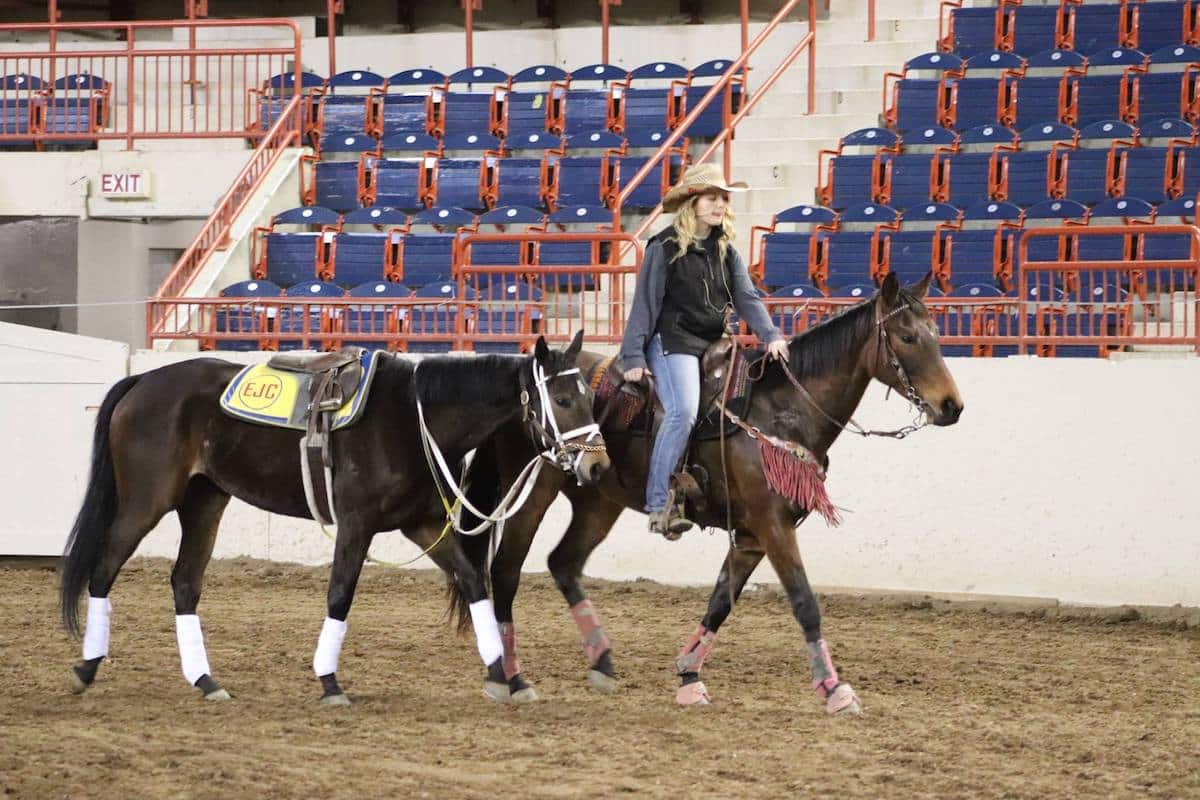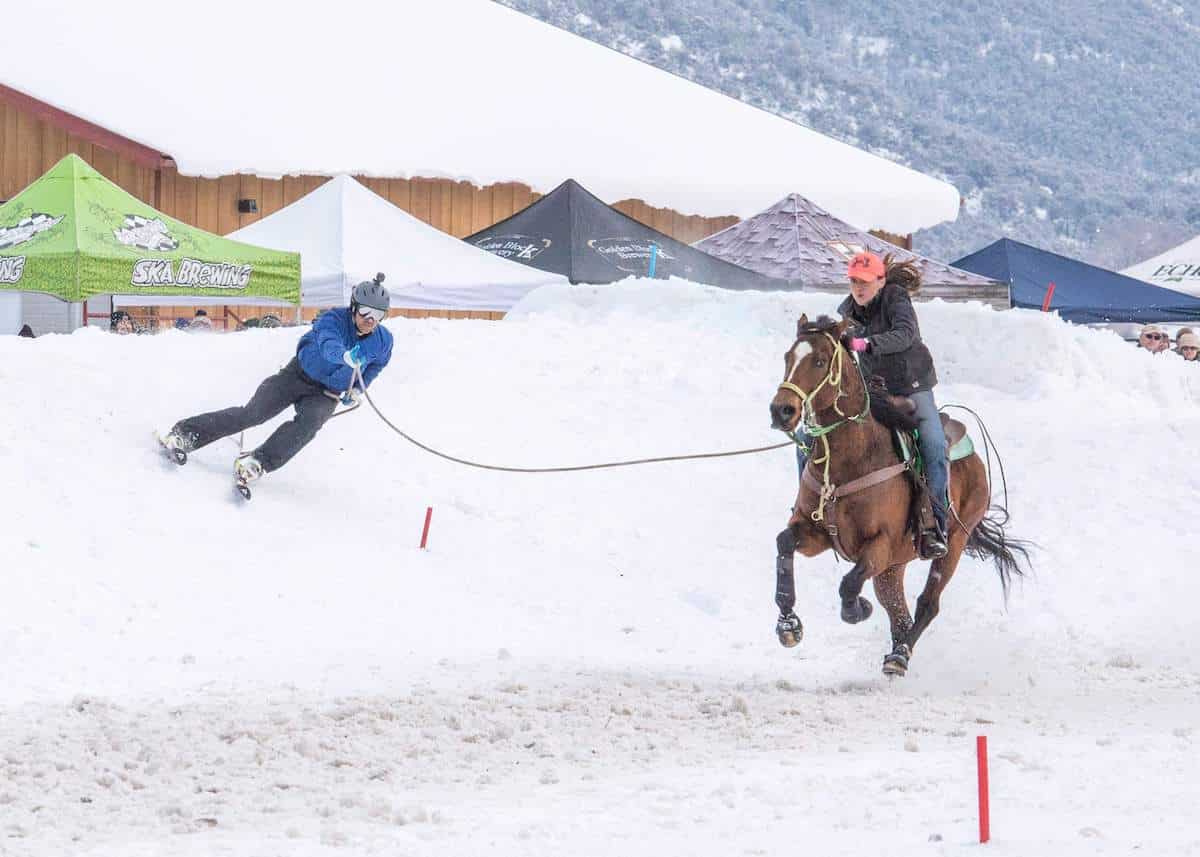How to scout for an OTTB online
Two minutes. That’s the average time it takes a horse to run the Kentucky Derby. It’s also the length of 75% of the marketing videos posted online, according to Vidyard’s 2018 Video in Business Benchmark Report.
This means when you’re shopping for horses online, especially on social media platforms, you might be making a buying decision based on a two-minute or less video, often of questionable technical quality, of a horse jogging a few paces down the shed row. Then there are the threads of opinions to weed through as you’re trying to assess the horse and ask questions.
Social media has become a dominant platform for adopting, selling and rehoming off-track Thoroughbreds, but it can be daunting for prospective buyers to find a suitable equine partner this way. Fortunately, there are trainers who can advise on using these platforms to your advantage and how to spot the “it” factor when assessing OTTB ads and videos. We’ve talked to them about scouting for a sport horse prospect online.
First Glance Attributes

Danielle Montgomery places priority on an OTTB’s temperament. That’s what drew her to 2019 Makeover prospect Little Lu, whom her daughter Meg ponied at a horse expo demo just two weeks off the track. Courtesy Danielle Montgomery
The key is to use social media’s networking capabilities to your advantage, says Danielle Montgomery, program administrator for the Pennsylvania Thoroughbred Horsemen’s Association-run Turning For Home racehorse retirement program, at Parx Racing, in Bensalem. A former trainer and all-around horsewoman, Montgomery rehomes more than 250 OTTBs annually — 80% of which she places through social platforms.
“Facebook has been the biggest (asset) for the last few years,” Montgomery says. “With the way social media is set up, you are advertising to groups that you know are already OTTB-minded. They’re already training and showing these horses. I get a lot of repeat adopters this way.”
She suggests visiting groups such as Northeast OTTB Connection and OTTBs Looking for Second Careers to review prospects.
Montgomery is the first person to see and evaluate horses that are getting ready to retire from their careers at Parx Racing, and even with years of experience, translating what she sees in a jog to potential for a second career is not an easy task.
“I’ll be the first to admit, it’s the hardest part of my job,” she says. She uses information from pre-evaluations that she conducts with program veterinarians, along with conformation traits and disposition cues, to provide the best scouting reports she can for potential buyers online.
“You can tell (promising prospects) by their temperament,” she says. “When a classy horse comes out, even if they’ve only been walking for a week and are used to training at such high intensity, you can see it. I look at how they control themselves and how they are in the stall. I love it when you can walk in the stall and a horse lets you go over them. They’re easy to throw in cross-ties. Even just leading a horse, a good one will walk in step with you and stop when you stop. You can tell a horse with a good brain very quickly.”
Montgomery recommends asking questions of the agents or sellers and becoming a handicapper of sorts. Reading the comments on past performances and watching race replays can be helpful, as can learning about the typical characteristics of the horses represented in a prospect’s pedigree.
“If it was temperament that made the horse not able to train or run, it might be an issue they’ll have to deal with for the rest of their life,” Montgomery says. “Look to see if a horse won’t go in the gate or won’t break. See how they were in the post parade. I’ve sold horses immediately off the track as hunters that could go without a pony” in the post parade.
Pedigree-wise, Montgomery identifies horses by Congressional Honor, Cardinal Ridge and Pioneerof the Nile as ones predisposed to have the demeanor to excel as sport horses. Montgomery’s daughter, Ali, is currently pointing a 4-year-old Pioneerof the Nile filly named Little Lu to the 2019 Thoroughbred Makeover in the Western disciplines.
“She came through the Turning for Home program, and after being off the track for two weeks, we took her to (the Pennsylvania Horse World Expo),” Montgomery says. “She was jogging right out in Western tack.”
Know Your Needs

Different riders desire different traits in a prospect depending on the discipline. Sarah McConnell wanted a speedy horse with a stock build for skijoring and found that in Rod McLeod. Courtesy Scotty Kenton Photography
Amy Paulus, of Paulus Racing and Performance Thoroughbreds, in Florence, Kentucky, rehomes more than 500 OTTBs a year and has placed horses in new homes in 49 states. But even she experienced a first when Rod McLeod left her program to join Sarah McConnell in Ridgway, Colorado.
The 5-year-old son of Roman Ruler took up a second career in skijoring — in which a person skis while being pulled by a horse.
“I am just learning about the sport, but after speaking to his now-owner, she explained they look for horses that were sprinters with a stocky build and usually 16 hands or under,” Paulus says. “A lot of these horses double-discipline in barrels or polo in the off-season.”
Rod McLeod raced 36 times, including in a Grade 3 sprint, and met all McConnell’s criteria. He also had a willing temperament.
“He was a very sweet, good-natured stallion on the track,” Paulus says. “He was easy to handle on the ground, but under saddle he was a little rocket.”
Paulus has found a niche rehoming horses straight off the track. She received RRP’s 2018 Ira Schulman Rehoming Award for “outstanding service to the Thoroughbred horse by facilitating transitions to careers after racing,” and her Facebook group has nearly 15,000 members. A third-generation horsewoman, she uses her multidisciplinary background to pair OTTBs with new owners and, when first receiving a horse off-the-track, she evaluates them based on five attributes: conformation, personality traits, feet, vices and behavior, in no particular order.
“All of these things are very important to potential buyers,” she says. “Because people mainly buy from me sight unseen, I try to ensure they are getting a partner that will fit everything they are looking for.”
The advice she gives horse-shoppers is to be true to themselves. “A lot of people tend to buy horses because of where they want to be in the future; not where they are right now,” she says. “Then, they end up overfaced and can’t understand why they are not moving forward. You have to buy a horse that fits you right now; it’s OK to buy something you can grow with, but it has to match your current riding level.”
Both Paulus and Montgomery stress that it’s also important to consider horses with previous injuries from their time on the racetrack.
“You shouldn’t write off horses from old bows, pinfiring, freeze firing, chips and even (fractured) sesamoids,” Paulus says. “You should also understand that horses with hardware can have no limitations. I think a lot of horses get passed up because a lot of buyers aren’t educated on these things.”
“Some of the best horses to have gone through the Turning for Home program were horses that were injured, and it was healable injury,” Montgomery adds, noting there are surgeons who donate a percentage of their time to treating rehoming organizations’ adoptable former racehorses, “and they’re not going to dedicate their time and expenses to repair a horse that isn’t going to have second career,” she says. “These are the most athletic, nicest horses.”
Ultimately, each sale or adoption is a unique, highly individualized endeavor — and can be an incredibly gratifying experience for the matchmakers.
“I stay in touch with a lot of people, and watching them grow with their horses is so rewarding,” Paulus says. “What I do has taught me a lot I didn’t know about the horse world, it’s connected me with wonderful people, and I am fortunate for each and every person I have met along the way.”
This article was originally published in the Summer 2019 issue of Off-Track Thoroughbred Magazine, the only publication dedicated to the Thoroughbred ex-racehorse in second careers. Want four information-packed issues a year delivered to your door or your favorite digital device? Subscribe now!

